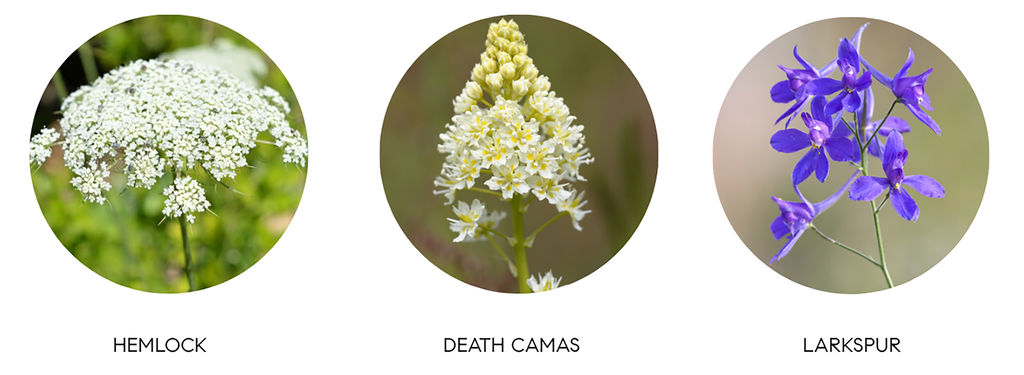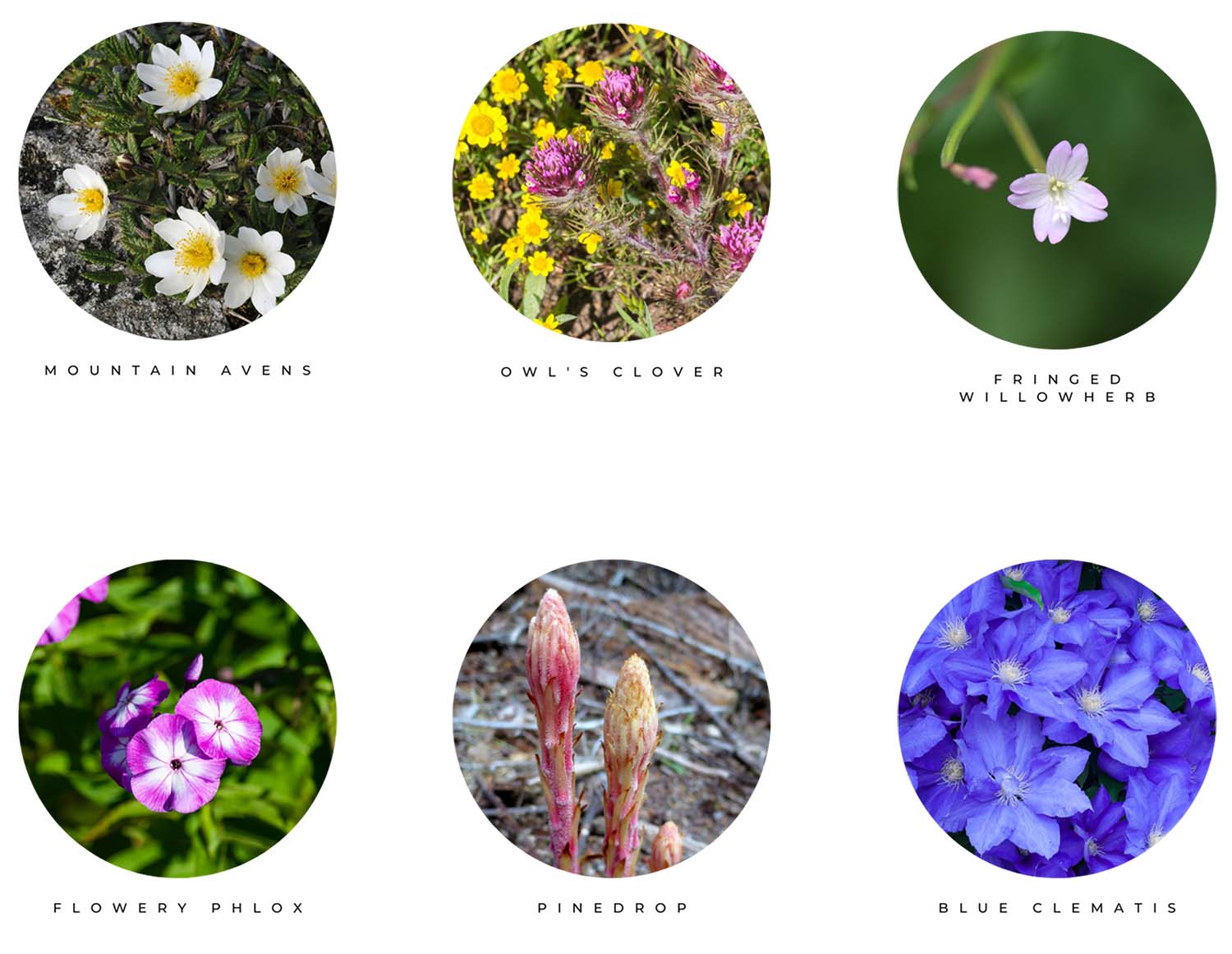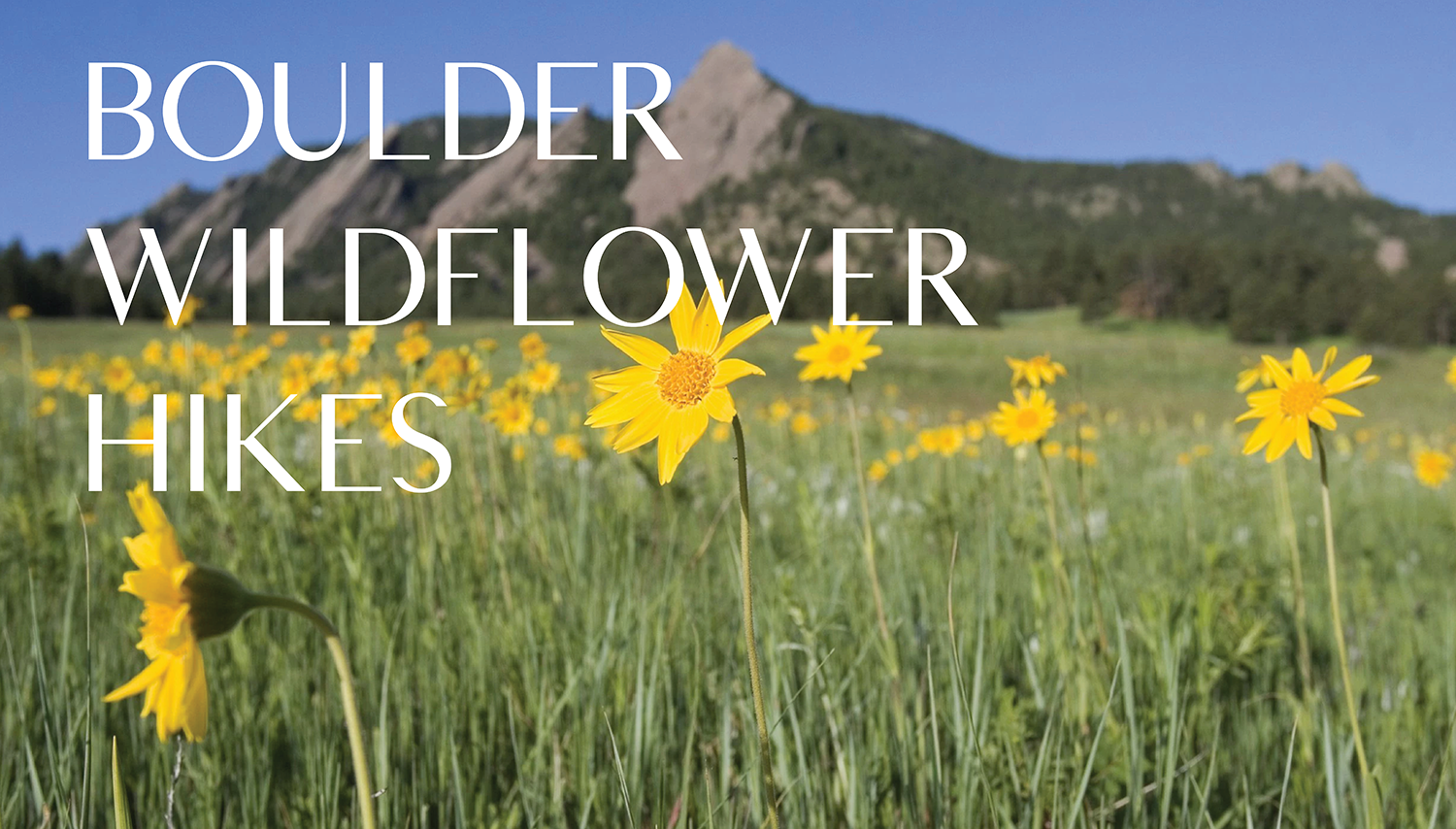Winter Snowshowers Bring Frontrange Flowers
Blankets of snow have begun to melt in the high country, giving dormant wildflowers a much-needed drink of water. Refreshed, they begin poking their lovely heads out of the ground in April. Soon, a blanket of delicate blossoms will cover the mountainside meadows and forests. Wildflowers will continue to be part of our vistas until the first snowfall in October. But May brings the largest wave, making it an ideal month for hiking and photography. A smattering of wildflowers can be found on almost all of Boulder’s trails. But to help you find the best spots, our Boulder realtor team has put together a guide to the areas with the most wildflower activity in Boulder.
But First— Brush Up On Your Trail Etiquette
Stay on the trail
It’s so tempting to run through a field of wildflowers with your arms open and the sun kissing your face…. But you should know that that’s against LNT principles. Even just walking through wildflower fields tramples the little beauties. We love the wildflowers. We want them to grow back forever! Please stick to the trail.
Look— but don’t pick!
It’s also illegal to pick wildflowers in Colorado. Some are so rare that they are protected by the state. It’s a hefty fine if you get caught, and it endangers their future growth.
Actually… don’t even touch them
And DEFINITELY don’t eat them! Hopefully, this goes without saying… but it’s important to mention if you’re hiking with a four-legged friend. Some of Colorado’s wildflowers are deadly (some even through touch). To play it safe, wear long pants and boots on your adventure. Larkspur, Death Camas, and the Western Water Hemlock are the most common poisonous local wildflowers to avoid.
Common Poisonous Wildflowers

Boulder’s Best Wildflower Trails
– Mesa Trail
Distance: 13.2 miles out-and-back
Difficulty: Moderate
Elevation Gain: 2,631 feet
Predominant Wildflowers: Western spring beauty, wild iris, mariposa lily, perennial sweetpea, wild geranium, crested prickly poppy.
What Makes It Great: The Mesa Trail follows the base of Boulder’s foothills and mountains. It’s relatively flat, but the views just don’t quit. You’ll be under the shadow of a mountain the entire time. There are a few different trailhead options (and connector trail options) so you don’t have to stick to the main trail if you don’t want to. You can simply follow the wildflowers.
– Goshawk Ridge and Fowler Loop
Distance: 4.1-mile loop
Difficulty: Easy
Elevation Gain: 734 feet
Predominant Wildflowers: wild bergamot, sugar bowls, pasque flowers, wild iris
What Makes It Great: One of the best day loops in Eldorado Canyon State Park according to our Boulder realtor team! This trail will lead you through craggy rock formations and wildflower meadows filled with fragrant wild bergamot. Stop to dip your feet in the creek when you need a break.
– Gregory Canyon Loop
Distance: 3.6 miles
Difficulty: Moderate
Elevation Gain: 1,197 ft
Predominant Wildflowers: Oregon grape, pasque flowers, tiny blue-eyed Mary, evening primrose, lance-leaved chiming bells.
What Makes It Great: Steep, rocky switchbacks will lead you to a ridge with incredible panoramas. If you prefer a shorter hike, you can opt to turn around when you reach Realization point at the summit of Flagstaff Mountain.
– Shanahan Ridge
Distance: 4.2-mile loop
Difficulty: Moderate
Elevation Gain: 807 feet
Predominant Wildflowers: pasque flowers, western wallflowers, chiming bells.
What Makes It Great: Sunlight-dappled pine forest trails wind you up and around Shanahan Ridge. Payoffs include wildflower meadows and stunning views of Bear Peak and Devil’s Thumb.
– Green Mountain Via the Ranger Trail
Distance: 4.1 mile loop
Difficulty: Challenging
Elevation Gain: 1,486
Predominant Wildflowers: Wild bergamot, Canada violet, larkspur, wood rose.
What Makes It Great: This route is steep and challenging, but staggering summit views and butterfly-kissed wildflowers will be your motivator. It will feel like a true escape into the wilderness. This trail is shady almost the entire way up, making it a great option for hot summer days.
A Few More Options
– Betasso Preserve
The Betasso Preserve is a 3.3-mile loop trail that offers stunning views of the surrounding mountains and wildflowers. The trail is easy to moderate, making it accessible to hikers of all skill levels. The preserve is home to a variety of wildflowers, including yarrow, goldenrod, and mountain harebells.
– Chautauqua Park
Chautauqua Park is a popular destination for hikers, birdwatchers, and wildflower enthusiasts. The park features a variety of trails that wind through the foothills and offer stunning views of Boulder and the surrounding mountains. In the spring and summer months, the park is bursting with wildflowers, including bluebells, Indian paintbrushes, and columbines.
– South Boulder Creek Trail
The South Boulder Creek Trail is a 3.7-mile out-and-back trail that follows the banks of South Boulder Creek. The trail features a variety of wildflowers, including lupines, sunflowers, and asters. The trail is relatively easy and offers stunning views of the creek and the surrounding mountains.
– Hessie Trailhead
The Hessie Trailhead is a gateway to a variety of trails that wind through the Indian Peaks Wilderness. The area is known for its stunning wildflower displays, which include columbines, Indian paintbrushes, and fireweed. The trails around Hessie can be challenging, but the stunning views and wildflower displays are well worth the effort.
How to Identify Wildflowers
There are over 750 types of wildflowers in Colorado. That’s a lot to memorize! If you’re interested to know what you’re looking at, there are a few plant identification tools that the Boulder realtor team at Burgess Group | Compass recommends using.
Colorado Rocky Mountain Wildflower App
All proceeds from this app support the Colorado Native Plant Society. It’s a great tool that can help you identify flowers, shrubs, trees, and ferns in our region. This app only works on iOS
If you own a Google Pixel phone, this app is already incorporated into your device. But not to fear, it’s free for anyone else to download too. Simply take a picture of the plant you’re looking to identify, press a button, and Google will scan its archives to guide you to the identifying place. It’s not limited to plants, either- you can use this for bugs, animals, food, whatever!
iNaturalist gathers crowdsourced information from its over 5 million users. Over 343,000 species have been observed so far. It’s a great way to learn about the wildflowers you’re seeing… while also contributing to a community of knowledge.
Common Wildflowers in the Front Range

More On Leave No Trace
Leave No Trace is an important set of principles to keep in mind when hiking in the beautiful natural areas around Boulder, Colorado. These principles are designed to help reduce the impact that humans have on the environment and ensure that these areas remain pristine for future generations to enjoy. Here are some Leave No Trace principles to keep in mind while hiking:
- Plan ahead and prepare: Before heading out on a hike, make sure you have all the necessary gear and supplies. Plan your route, check the weather forecast, and make sure you know the regulations for the area you’ll be hiking in.
- Travel and camp on durable surfaces: Stick to established trails and campsites to minimize your impact on the surrounding environment. Avoid walking on fragile vegetation, and if you need to go off-trail, do so only on durable surfaces like rocks or sand.
- Dispose of waste properly: Pack out all trash, leftover food, and litter. If you need to use the bathroom, do so at least 200 feet away from water sources and bury any human waste at least 6-8 inches deep.
- Leave what you find: Don’t pick flowers, remove rocks, or disturb wildlife. Leave natural and cultural artifacts as you find them to help preserve these areas for others to enjoy.
- Minimize campfire impact: If campfires are allowed in the area, use established fire rings and only burn small sticks and twigs. Make sure the fire is fully extinguished before leaving.
By following these Leave No Trace principles, you can help preserve the natural beauty of the wildflower hikes around Boulder, Colorado, and ensure that these areas remain pristine for future generations to enjoy.

